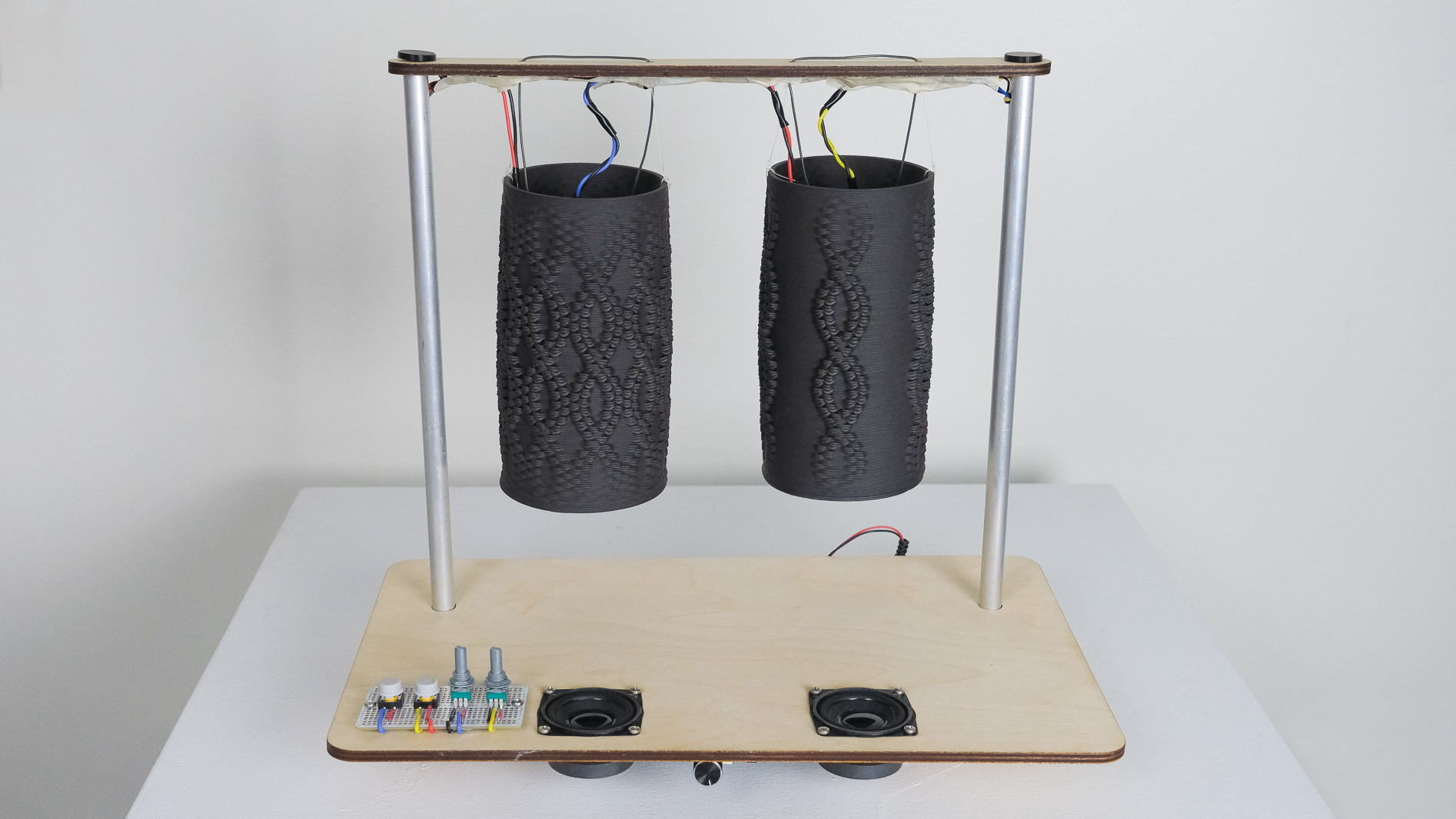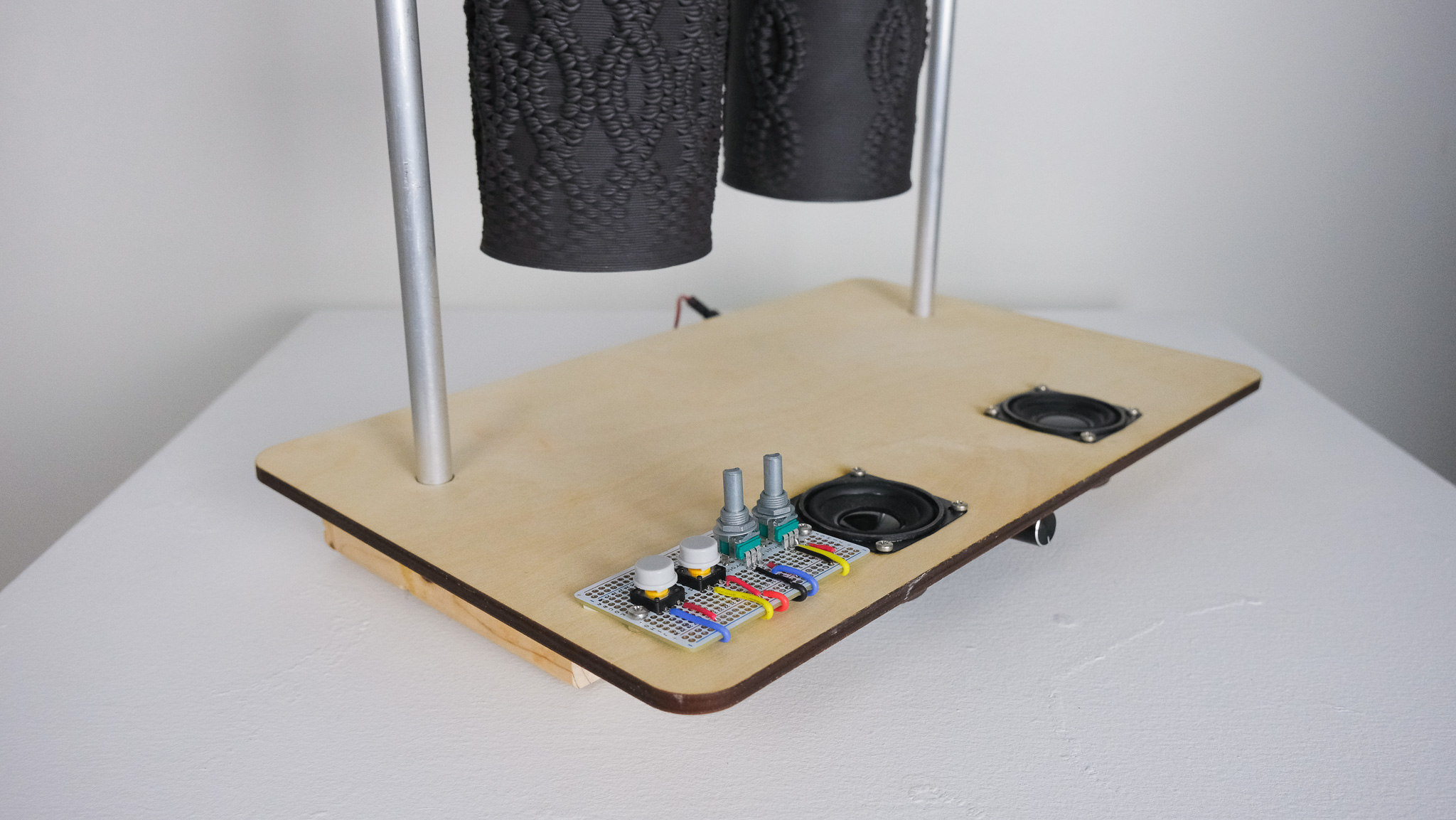


The Vitrified Sounds Instrument processes ringing from clay 3D printed vessels. When the white buttons are pushed, motors run using pulse width modulation from a Daisy board and are amplified by a transistor circuit to strike the interior of the vessels. Piezo mics installed on the ceramic surface record ringing into delay lines that are resampled at varying times to be fed into an amplifier assembly. The signal is sent to the Daisy board for processing. Free-running accumulators sequence 8 overtones, four per vessel, which are synthesized. Knobs allow interactive control of delay times and speed of the sequencers through the Daisy. All processing is done in the gen environment inside of Max. After processing, the final audio outputs from both channels are fed to a final amplifier, which drives the speakers.
The Vitrified Sound Instrument was developed as part of the 2024 synthUX Hackathon and was presented at SBCAST First Thursday.
Jazer Giles
Marcel Rodriguez-Riccelli
Sam Bourgault
Devon Frost
Daisy Seed
dc motors
contact mic
3D printed bells


